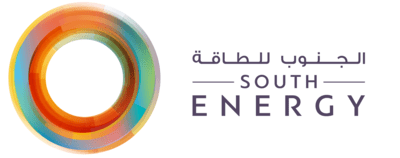Blog
Demystifying Edge Vs Cloud Computing
Содержание
You can access cloud services through your web browsers, such as Google Chrome and Firefox. Some cloud service providers also have dedicated mobile apps to access cloud services. Some of the examples of cloud services for consumers include Google Drive, Dropbox, Apple iCloud, OneDrive, and Netflix. For businesses, a cloud service provider like Ridge is a good option.

If your company is subject to regulatory compliance requirements, this can be a strong plus as you won’t have to worry whether your partner meets the requirements. Does the thought of upgrading to cloud-based software sound intimidating? Let’s dispel some of the rumors, and set the record straight on the benefits of embracing the cloud for your business. Infrastructure Control – Your organization, owns the hardware and system that underpins your IT infrastructure.
If the robot breaks down, products fall on the floor and the line has to be stopped for emergency maintenance. The app on the edge device feeds data into even more powerful machine learning systems in the cloud, which improve the predictive algorithms and feed updates to the edge device. As digital transformation projects What is edge computing reach their endgame, enterprises are increasingly shifting focus from simple migration to more nuanced data-first modernization. As part of that, the idea that every endeavor needs to be 100 percent cloud-based is rapidly changing, with organizations swinging workloads back to on-premises operations when warranted.
Telecommunications companies are rolling out network automation at the edge, enabled by software-defined networking and 5G. Enterprise edge automation is enabled by AI and ML solutions, an upsurge in the number of smart devices, and the automatic deployment of applications. Aside from being faster to set up and having lower upfront costs, cloud services are cheaper to run through the flexible pricing models they offer. The cloud also offers limitless compute on demand and eases IT management.
Cloud storage is perfect for small and growing businesses that deal with less sensitive data. This on-premises vs. cloud storage comparison has given you every bit of detail you need to know to make an informed decision on which solution is best for your business. Also, if you came to the conclusion that you need to migrate from in-house servers to cloud services, don’t panic, you now have all the information for a smooth transfer. The best scenarios for edge technology include orgs that operate solutions in scattered locations such as retail stores, large hotel chains, manufacturing, and fleet operations.
Workloads can be distributed using private and public infrastructure with minimal performance loss. While on-premise infrastructure lacks on-demand service availability and is slower regarding database changes, it can perform the same cloud-computing functionalities. An on-premises setup is a good place to test workloads before migrating them to the cloud solutions.
What Is Cloud Computing?
Despite the benefits of the off-site cloud, security is a critical concern for many industries. As such, on-premise environments take precedent despite some of their cost drawbacks.Security challenges remain the number one barrier to widespread cloud computing deployment. As such, many IT departments worldwide get skeptical when trusting cloud providers with personal information of employees like login credentials https://globalcloudteam.com/ or even intellectual property. On-premise to cloud migration is the process of shifting your digital assets, such as applications and data, from your company’s on-premise infrastructure to the cloud. Once you have migrated to the cloud, you can access services over the internet from anywhere instead of only when in the office. \The main advantages of edge computing over cloud computing are Better data management.
- With on-premises, the organization also has to bear the ongoing costs of space, server hardware, and power consumption.
- In this post, we will introduce both software solutions and explain the critical differences between both to make informed decisions.
- With cloud, on the other hand, you need a fast and reliable internet connection.
- So your data is often safer in the cloud than on a server in your offices.
- Let’s walk through how we’ve evolved from on-prem to cloud to edge, and what this could mean for your business.
Cloud app devs are just getting a grasp of distributed/federated computing, communication, and storage. They are used to doing all the computing, storage all in one place either on prem, or in a cloud instance. Distance, latency, and bandwidth are choking their application performance so they are having to come up with ways to do local monitoring and processing but aggregate data to their cloud for data retention and reporting. Edge computingcan help lower dependence on the cloud and improve the speed of data processing as a result.
This spells performance benefits over on-premise setups, such as reduced network latency for software applications and greater economies of scale. SaaS, also called cloud application services, is a cloud computing service that organizations use. In SaaS, a third-party SaaS provider hosts and manages cloud-based applications that can be accessed over the internet.
Datasheet
For example, the USA Health Insurance Portability and Accountability Act ensures the safety of private health information. Generally, for organizations subject to such regulations, on-premise setups help them remain compliant as they know where their data is at all times. This can provide peace of mind that the privacy of customers, partners, and employees is ensured. Whether you should choose on-premise or the cloud depends on your requirements.
Generally used on an as-needed basis, companies only pay for what they use and can scale up or down to suit customer and market demands. Edge computing helps organizations improve their energy consumption management. IoT devices and sensors linked to an edge platform can be used to keep track of energy usage and carry out real-time analysis of consumption. Backup as a service and disaster recovery as a service are some of the core cloud computing use cases. One of the most straightforward methods for organizations to begin their shift to the cloud is investing in a backup solution.
Top 10 Edge Security Vendors
5G refers to the fifth generation of telecommunications networks, representing upgrades in bandwidth and latency. 5G is a transport mechanism that enhances the capabilities of cloud computing and edge computing—but 5G is not the edge, an edge device, or edge computing. Satellite imagery—like the kind being used on the International Space Station — is an edge computing exercise.

Well, that’s precisely what we’re going to discuss today in an attempt to help you pick out the right kind of software for your company. If you have 1 TB of data to transfer over a 1 Gbps network connection, the online migration will probably take less than 3 hours. However, if you need to transfer 1000 TB of data over the same network connection, you will be living in front of your computer for the next 100 days.
Cloud is scalable and provides on-demand services, which means businesses can use as much storage and computing power as they need. With the cloud, companies can add more resources as they grow and their requirements increase. In contrast, with on-premises, organizations usually have limited storage and computing power.
Data Privacy In 2022: Heres What You Need To Know
“However, a centralized utility for IT was never a realistic expectation,” Haff says. “Even public clouds themselves have evolved to offer provider-specific differentiated services, rather than competing as commoditized utilities. But more generally, edge computing is a recognition that enterprise computing is heterogeneous and doesn’t lend itself to limited and simplistic patterns.
A cloud MDM solution is best for an enterprise to cut down on initial capital costs or prefer a monthly/annual subscription plan. In contrast, if companies do not wish to share data with other entities due to strict security regulations, an on-premises solution works better. But it’s important to remember that the cloud delivers more flexibility and reliability, increased performance and efficiency, and helps to lower IT costs.
Cloud Vs Edge: Whats The Difference?
With on-premise hosting, you run your applications on your own servers, which are hosted in your data center in your physical office. In contrast, with the cloud, you don’t need to buy your own hardware or any physical infrastructure. The cloud providers are responsible for hardware, software, and maintenance, and they charge for it as a subscription cost, which is cheaper than buying and maintaining your own hardware. As you can see, both cloud computing and on-premises IT systems each have their own advantages, along with a range of disadvantages. The real task begins in choosing the option that best suits your organization, while taking into account the products and services that your company offers. Cloud and edge computing both experience a dynamic level of challenges, regardless of the numerous benefits they present.
Internet Connectivity
Today, cloud computing impacts the overall strategy and growth of organizations. Similar to streaming services, the growing popularity of smart homes poses a problem. It’s now too much of a network load to rely on conventional cloud computing alone.
The Best Of Both Worlds: A Hybrid Cloud Architecture
However, if you take the help of an expert service provider, the deployment is completed within minutes, saving your business a lot of time. To visualize a manufacturing example for edge, look at aSiemens trade show presentationon how edge could be applied to predictive maintenance on the shop floor. The presenters use the example of a robot responsible for catching electronics components as they come off the assembly line and placing them in packaging for shipment.
On-premise applications are typically considered more reliable, secure, allowing enterprises to maintain a higher level of control in contrast to public cloud. In contrast, security can be a concern with using a public cloud environment because of cloud breaches and hacking. However, if you choose a reliable cloud service provider with a high level of security like Ridge, security won’t be an issue. Off-Premise, on the other hand, means that you use the premises of the cloud service provider. The cloud provider takes care of the hardware and software maintenance and provides you with all the necessary resources, such as storage and databases.
On-premise software will also give you more control over how you use it since you will own it outright and have it on your server. You’ll be able to make changes to it or switch your configurations for it on a whim. Get yourself an efficient Windows 10 VPS for remote desktop, at the cheapest price out there.

